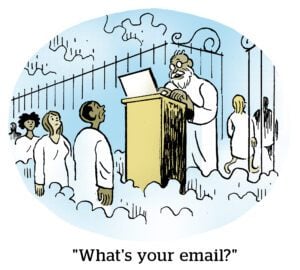I’ve been beating the drum on Seller Defined Audiences (SDAs) and other publisher-driven solutions for the Cookiepocalpyse ever since that fearsome phrase was coined in 2020. But it’s been the better part of three years now, and the Cookiepocalypse still hasn’t come to pass, nor have any post-cookie solutions been adopted at meaningful scale by the buy side.
Seller Defined Audiences were meant to help publishers take more control over a digital ad ecosystem that’s increasingly stacked against them. To get buy-side adoption of Seller Defined Audiences, publishers knew that there had to be scale, but also trust in how we are defining these audiences.
The IAB’s Contextual Categories seemed the best candidate for visibility into readers that the buy-side could no longer access (because they browse in Safari, say). Publishers would provide the Contextual Category of a page, measured by a trusted third-party entity. We would finally demonstrate our potential to add value to the supply chain.
But the buy side already has access to the very same information from the same trusted third-party entities that publishers use to define these Contextual Categories. So why bother?
The need for real-time data
In the time it takes for a newly published article to be crawled by a third-party data provider and for their measurement – “IAB11: Books & Literature” – to be made, the buy side has also received the same reconnaissance from data platform crawlers. The very same endpoint that I may use to get an IAB Contextual Category from IAS is being pinged by DSPs, and the data is being ingested there for use in targeting. So, an oRTB object carrying “IAB11” to the buyer does nothing for me as a seller if the buyer already knows the URL’s Contextual Category.
In order for seller-defined Contextual Categories to be of use to the buy side, publishers need to provide that data into the bidstream faster than the crawlers can. That means integrating data provider technology—IAS, DoubleVerify, Comscore—onto our pages, perhaps even into our CMS.
By providing the Contextual Category as an article is published, publishers could add it to the first bid requests that go out for the first readers visiting the page and make it available for standard targeting in DSP buying interfaces.
Overview of obstacles
Publishers are going to have a hard time stomaching the cost of integration, though. Traditionally, costs are borne by the buyers when they apply the desired targeting in the DSP. That may still need to be where the revenues for the data providers come from. But publishers can work with the data providers to get them closer to the source.
There’s a carbon net zero benefit for data providers as well—they wouldn’t have to listen for new pages to crawl in real time. That work can be done once in the beginning, and only the endpoint response with the category, or other contextual value, would be needed from that point on.
While the industry may never fully trust a Contextual Category that the publisher provides, if data providers would sign off on the contextual signal at both ends of the transaction, we might get closer to a working solution.
But there are also the unpleasant realities of brand safety scoring to consider. Here again, publishers are dependent upon sampling done by third-party companies for buyers to learn about our pages on a timetable that doesn’t correspond to the speed of publishing.
If buyers want to have access to brand safe content the moment it’s published, publishers should have on-page or CMS-level integrations with the DoubleVerifys of the world that give them data on every page in real time. Then that data can be synced to the DSP for targeting (and payment) from the buyers.
No time to waste
Take one look at the current CPMs in Safari and Firefox, and you’ll realize that the time for solutions is now. If the original idea of publishers being the data saviors isn’t panning out, let’s partner with companies that buyers trust to make up for the signal loss that comes with fewer cookies and more privacy restrictions on the internet.
By installing code on page to achieve this, publishers are still taking more control over their inventory than they would otherwise have via standard prebid functionality and open market auctions. And the potential value that can be restored from that is revenue all publishers desperately need.
“The Sell Sider” is a column written by the sell side of the digital media community.
Follow Justin Wohl, Salon and AdExchanger on LinkedIn.
For more articles featuring Justin Wohl, click here.

















